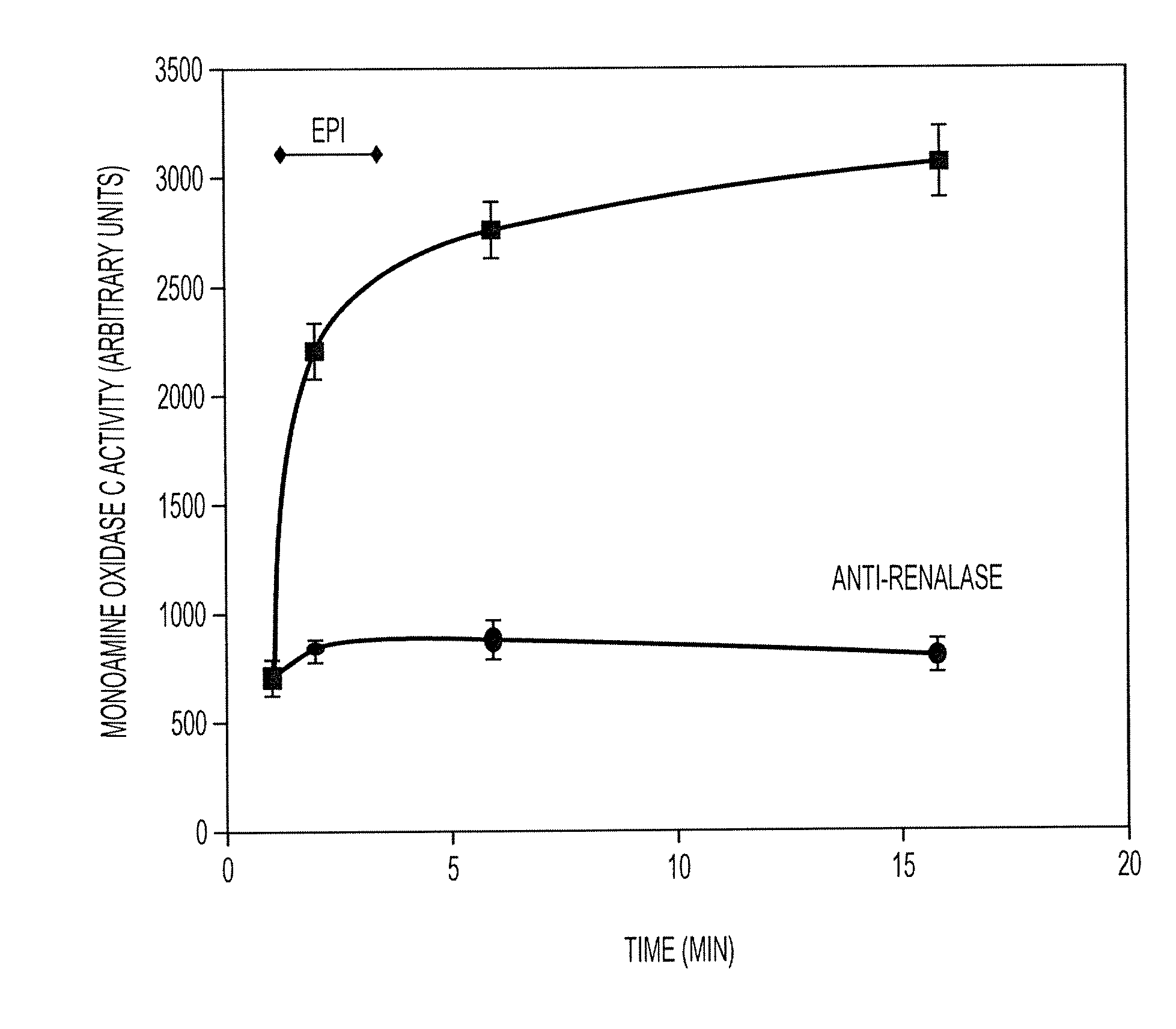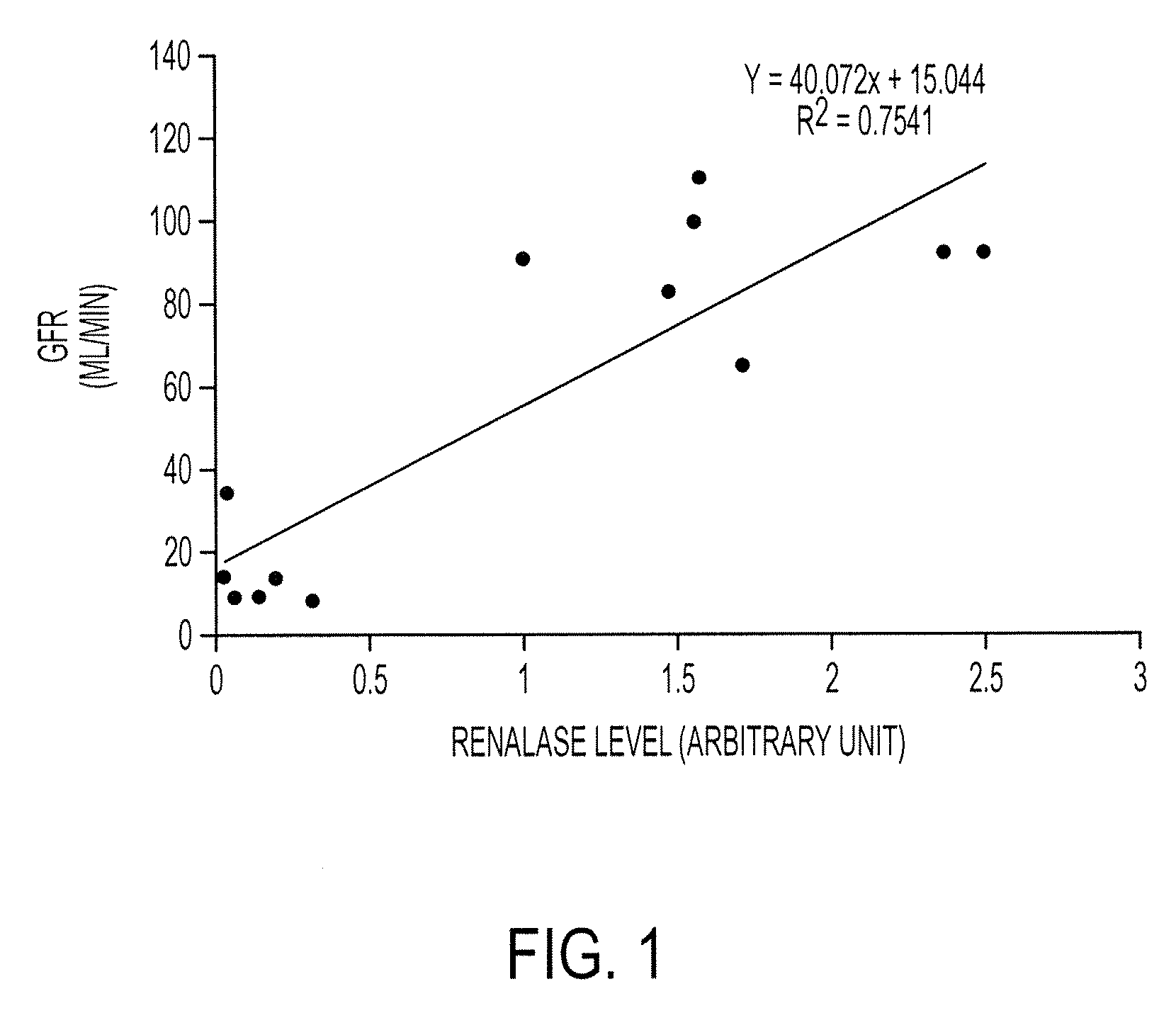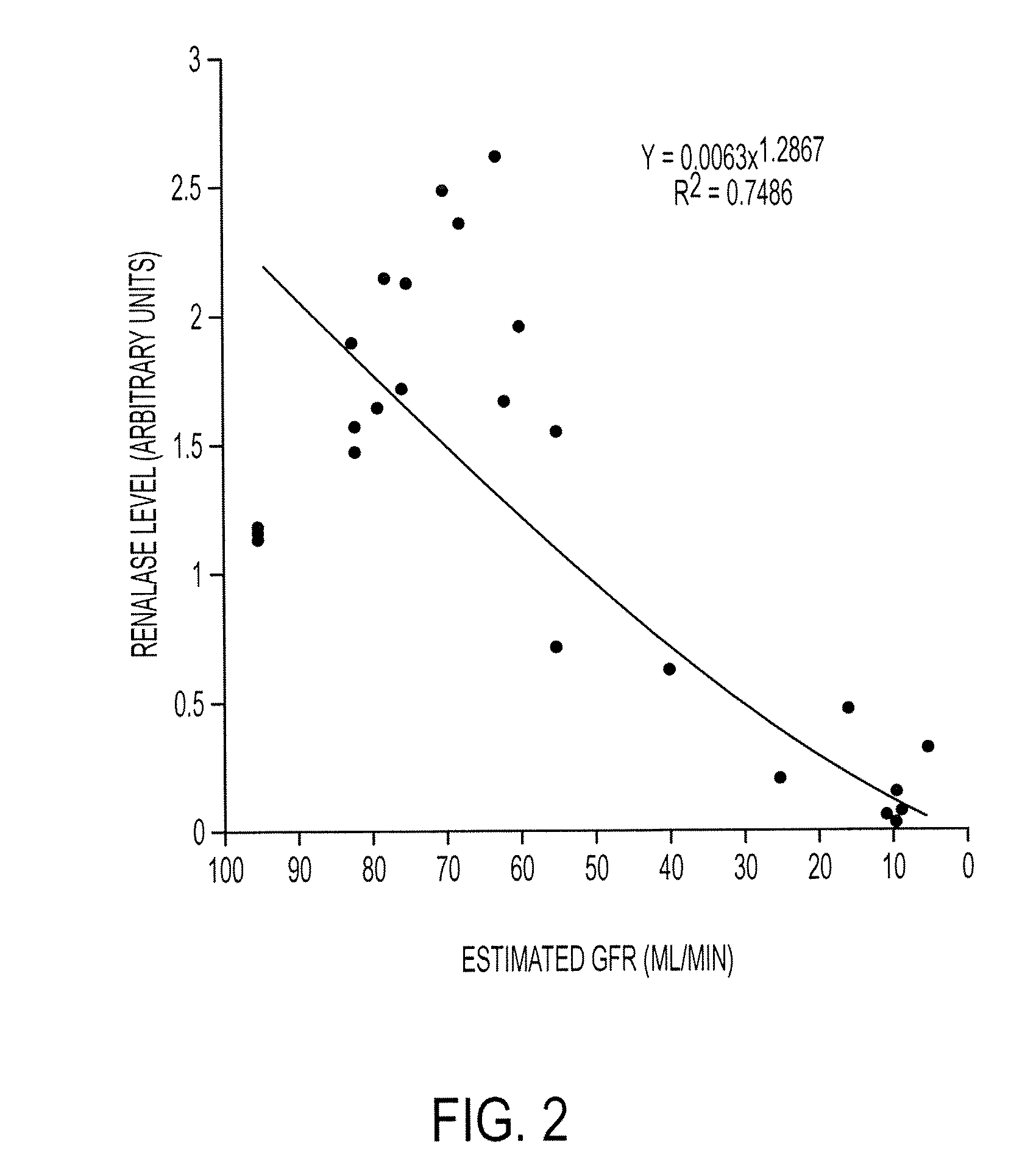Methods of regulating renalase (Monoamime Oxidase C)
a technology of kidney enzyme and monoamime oxidase, which is applied in the direction of cardiovascular disorders, drug compositions, peptide/protein ingredients, etc., can solve the problems of inability to replicate important functions of the natural organ, the morbidity and mortality of this therapy is undesirably high, and the procedure is not suitable for re-invention, so as to prevent, treat or ameliorate a renal condition, the effect of preventing, treating or ameliorating a renal
- Summary
- Abstract
- Description
- Claims
- Application Information
AI Technical Summary
Benefits of technology
Problems solved by technology
Method used
Image
Examples
example 1
Renalase Level Correlates with Renal Function
[0464] It is well known that ESRD patients have increased circulating catecholamine levels, contributing to higher cardiovascular mortality. Elsewhere we have shown in humans that the plasma concentration of renalase, which metabolizes catecholamines, is markedly reduced in ESRD patients. See, for example, PCT / US05 / 009248, published as WO 2005 / 089505 on 29 Sep. 2005, which is specifically and completely incorporated herein by reference.
[0465] To further extend our findings, we have recruited 290 patients with varying degrees of renal function (0-120 ml / min GFR (Glomerular Filtration Rate)). A preliminary analysis of 13 patients with varying degrees of renal insufficiency indicates that renalase level correlates well with respective GFR. See FIG. 1. An additional examination of 27 patients shows the same result. See FIG. 2.
example 2
Renalase Activity
[0466] We have tested renalase isolated from blood and urine. Under basal conditions, the protein isolated from human blood has no significant amine oxidase activity in vitro. In contrast, renalase isolated from human urine metabolizes catecholamines in vitro. See FIG. 3.
[0467] While the mechanism of renalase activation is not completely defined, we now know that inactive recombinant renalase made in E. Coli has FAD covalently incorporated in the protein. Covalent incorporation of FAD into renalase may be necessary but not sufficient for renalase activation. The fact that we can generate active enzyme using a refolding process in the presence of FAD, suggests that active renalase has a different conformation and that additional FAD binding sites must be occupied through non-covalent interactions.
example 3
Mechanism of Renalase Regulation
[0468] To further understand the pathophysiology of renalase, we have initiated studies designed to probe its mechanisms of activation. We have established that the protein circulates in blood in an inactive form and we postulated that since renalase metabolizes catecholamines, it could be substrate-regulated.
[0469] In order to test that hypothesis, we infused catecholamines into rats and measured renalase activity before and after infusion. As shown in FIGS. 4 and 5, we observed a 3-4 fold increase in blood renalase activity within minutes of starting dopamine or epinephrine infusion. This stimulatory effect was abolished by the addition of polyclonal renalase antibody. FIG. 6 compares this increase in renalase activity to systolic blood pressure in the animal.
[0470] Additional experiments have demonstrated that renalase protein blood levels are affected by catecholamine blood levels. As shown in FIG. 7, renalase protein levels in blood drop signi...
PUM
| Property | Measurement | Unit |
|---|---|---|
| concentration | aaaaa | aaaaa |
| concentration | aaaaa | aaaaa |
| molecule mass | aaaaa | aaaaa |
Abstract
Description
Claims
Application Information
 Login to View More
Login to View More - R&D
- Intellectual Property
- Life Sciences
- Materials
- Tech Scout
- Unparalleled Data Quality
- Higher Quality Content
- 60% Fewer Hallucinations
Browse by: Latest US Patents, China's latest patents, Technical Efficacy Thesaurus, Application Domain, Technology Topic, Popular Technical Reports.
© 2025 PatSnap. All rights reserved.Legal|Privacy policy|Modern Slavery Act Transparency Statement|Sitemap|About US| Contact US: help@patsnap.com



